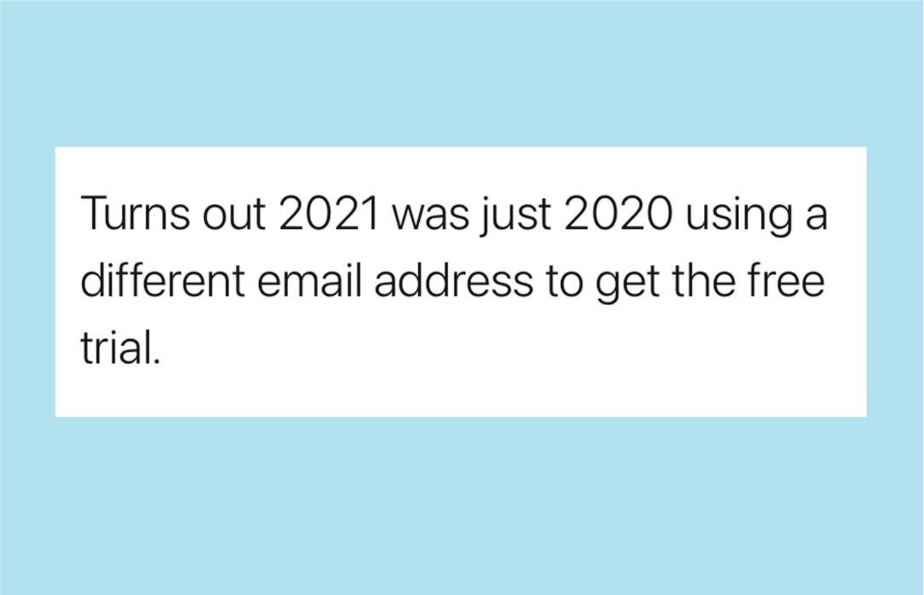
One Year Anniversary of Covid-19: A Then and Now Look at Marketing in the New Normal
2020 was the beginning of a new decade - full of excitement for the future. In early 2020, marketing and media companies prepped for a busy year ahead, including the Summer Olympics and an election.
Top marketing trends going into 2020:
- Video Content
- Content Marketing
- Personalization - In a Forbes survey of 1,000 people, 90% said that they found personalization appealing. More importantly for businesses is the fact that 80% admitted they’d be more likely to give their business to a company that offered them a personalized experience.
- Virtual Reality and Augmented Reality
- Data Privacy - Consumers were becoming more conscious of their privacy. This was a big opportunity for companies that gain consumer trust by ethical treatment of data and privacy. Tying into personalization - Companies need to find a balance, the desire for optimized experiences with concerns about sharing personal data.
Then COVID-19 hit… Consumer concern about both exposure to the coronavirus and the impact it would have on their lifestyle remained at its highest point at the start of the global pandemic. A few trends that rose to the top in regard to this stringent shift in behavior were increased brand loyalty, a push for all things “local” and an expedited digital takeover.

Media consumption from all sides then skyrocketed. According to a study by Nielsen, there was a 215% YOY increase in the U.S. Video content viewership. This accounted for shifts in both traditional and digital media. Traditional (although brands pulled back on radio) and digital took the top spot overall. During the pandemic we saw, traffic spikes on Facebook, Google search adjustments and the infamous rise of TikTok. Consumers were looking at screens more than ever, so brands had to adapt to the new normal.
In addition, we saw a large rise in cause-marketing. Cause marketing in summer 2020 and beyond had the effect of building up consumer confidence and positivity as the economy faced the worst downturn in modern memory. A study from Mintel showed that in non-crisis times, nearly 73% of Americans say a company’s charitable giving affects their purchase decisions, while 84% of consumers place importance on a company’s support for a charitable cause. The study also found that customers with emotional relationships with a brand have more than 300% the lifetime value as those who don’t and will be 26% more likely to recommend that brand to others. Cause marketing was a consumer preference which turned into a consumer requirement.
With such a dramatic shift in all facets of the life brought on by the pandemic, brands were faced with a multitude of challenges that many times required quick solutions. These consumer behaviors made us take a look at content as well as shifting messaging and overall strategy. We were no longer adapting to a new normal but preparing to execute strategies and tactics in the most efficient, creative and pandemic-appropriate way possible. One example of this, was back-to-school sales as virtual-school continued. Brands had to adjust messaging, extend sales and highlights the positives of the current reality.
In addition, during this time of crisis was the start of the all remote world we are still living in today. This turned brands normal on its head with in-person events not being possible and contactless and sanitization levels at an all-time high. Not to mention, business structure was shifted to full work from home (WFH) and forced to make it work.
Lastly with media consumption and digital behaviors rising quicker than ever before, users were then faced with a content overload. Brands had to find ways to break through the clutter that dominated feeds during this time. Not to mention the crisis communication that weaved its way through all marketing strategies with COVID-19 outbreaks, deaths, etc.
COVID-19 upended the world for brands and marketers, but as it turned out, the pandemic only marked the beginning of a wave of technological and social changes that would sweep the nation. This was one of the most prevalent trends seen in Q1 2021 as brands looked ahead. According to HubSpot, this “panic pivot” will turn into a purposeful reinvention and many marketers who aren’t a digital powerhouse will be outpaced in 2021.
In addition to a multitude of technology-focused digital and social trends, events will likely never look the same and won’t get rid of a virtual aspect any time soon. Next, brands will likely capitalize on change from content marketing to cause-marketing. Content marketing will be more authentic than ever before, and likely start with conversations. Because while quarantines, social distancing and remote work will play a critical role in our eventual emergence from the COVID-19 pandemic, they also have had a significant side effect: Disengagement. 2021 will see marketers tapping into the human need for just the opposite: engagement. This shift that we’ve started to see unfold with ignite brands to make genuine, and inclusive connections with consumers more than ever before.
Using the knowledge we have today on these trends and behaviors… As marketers, what questions can we ask now to prepare for the next challenge for our clients?








